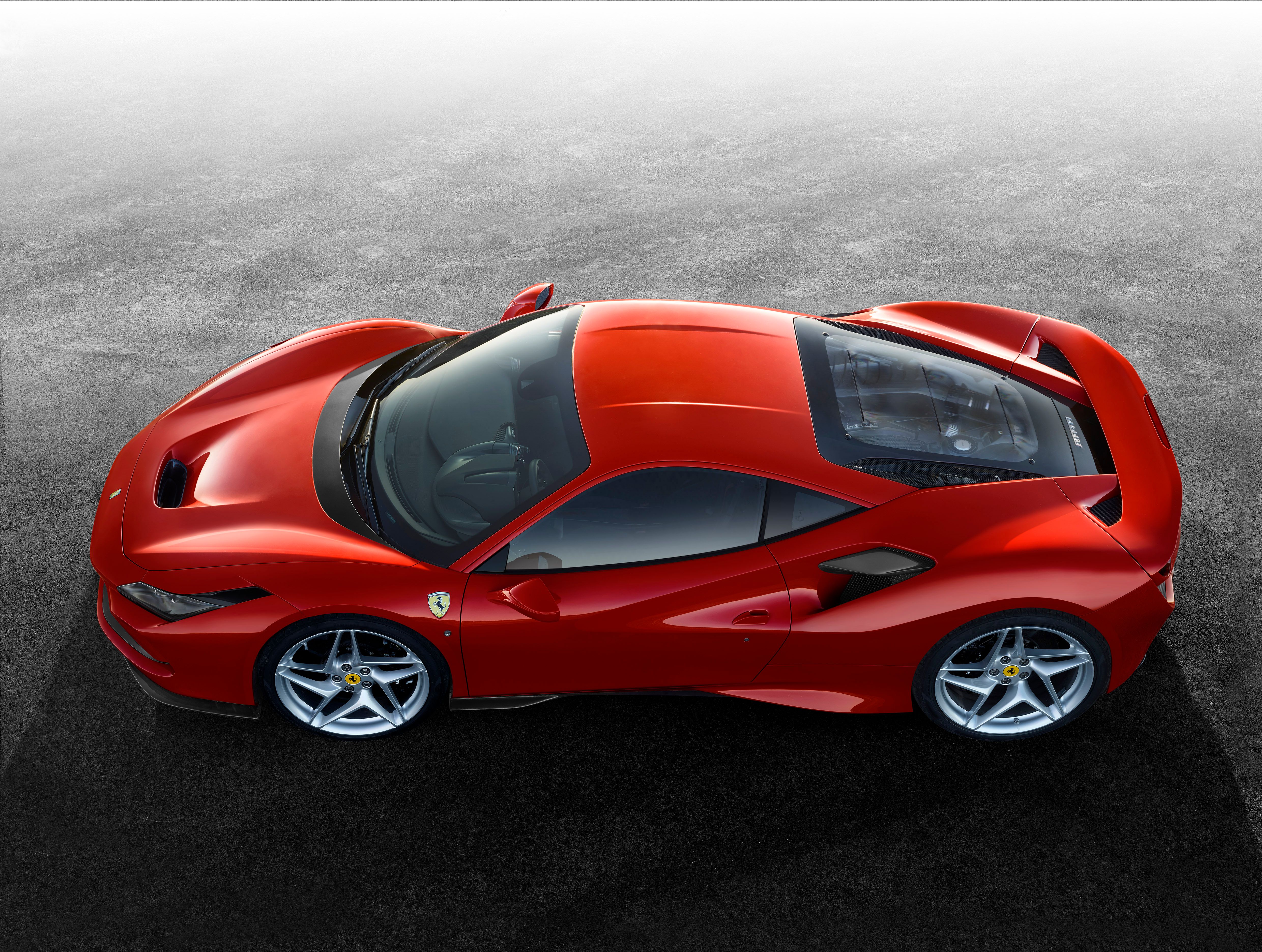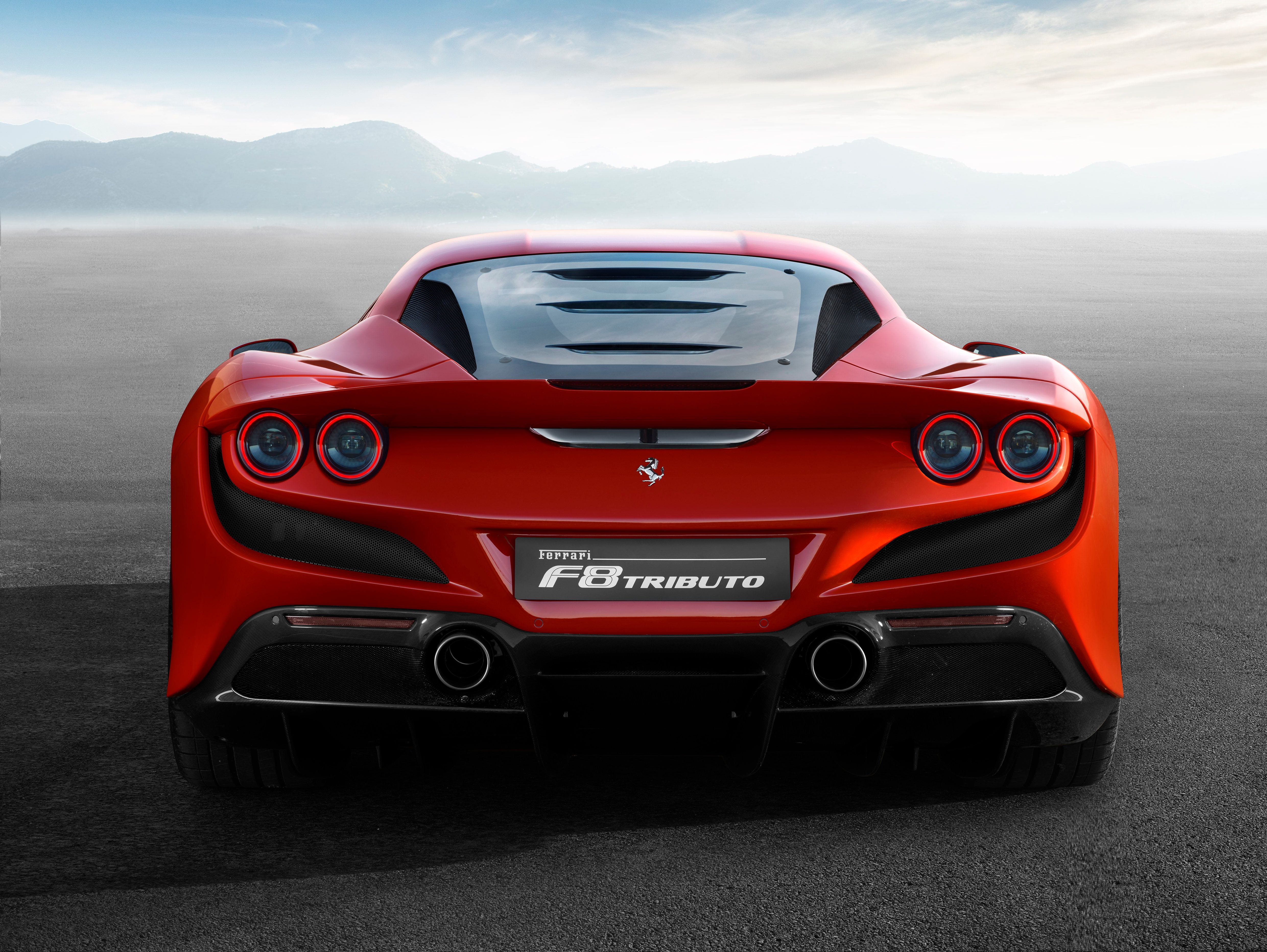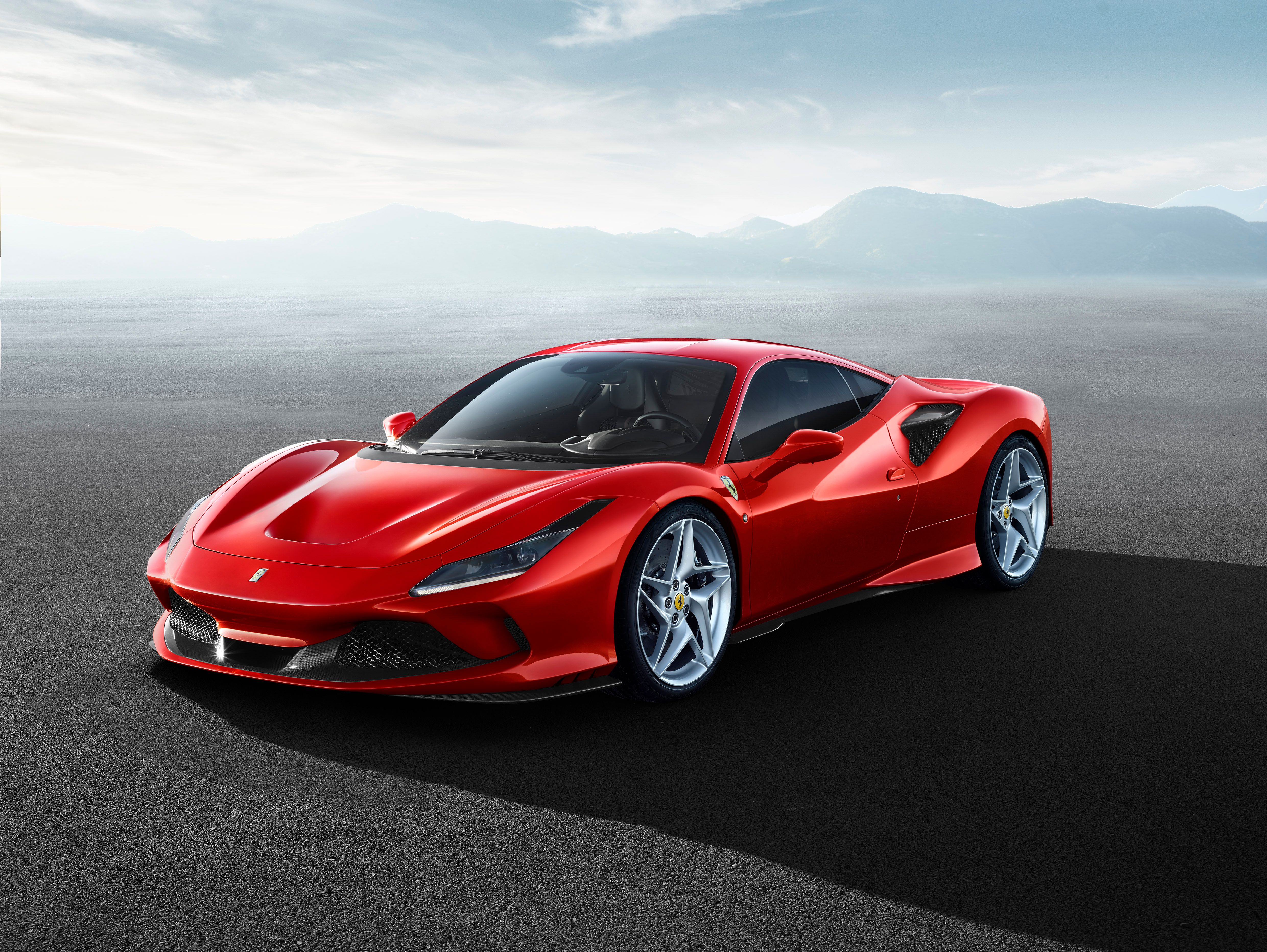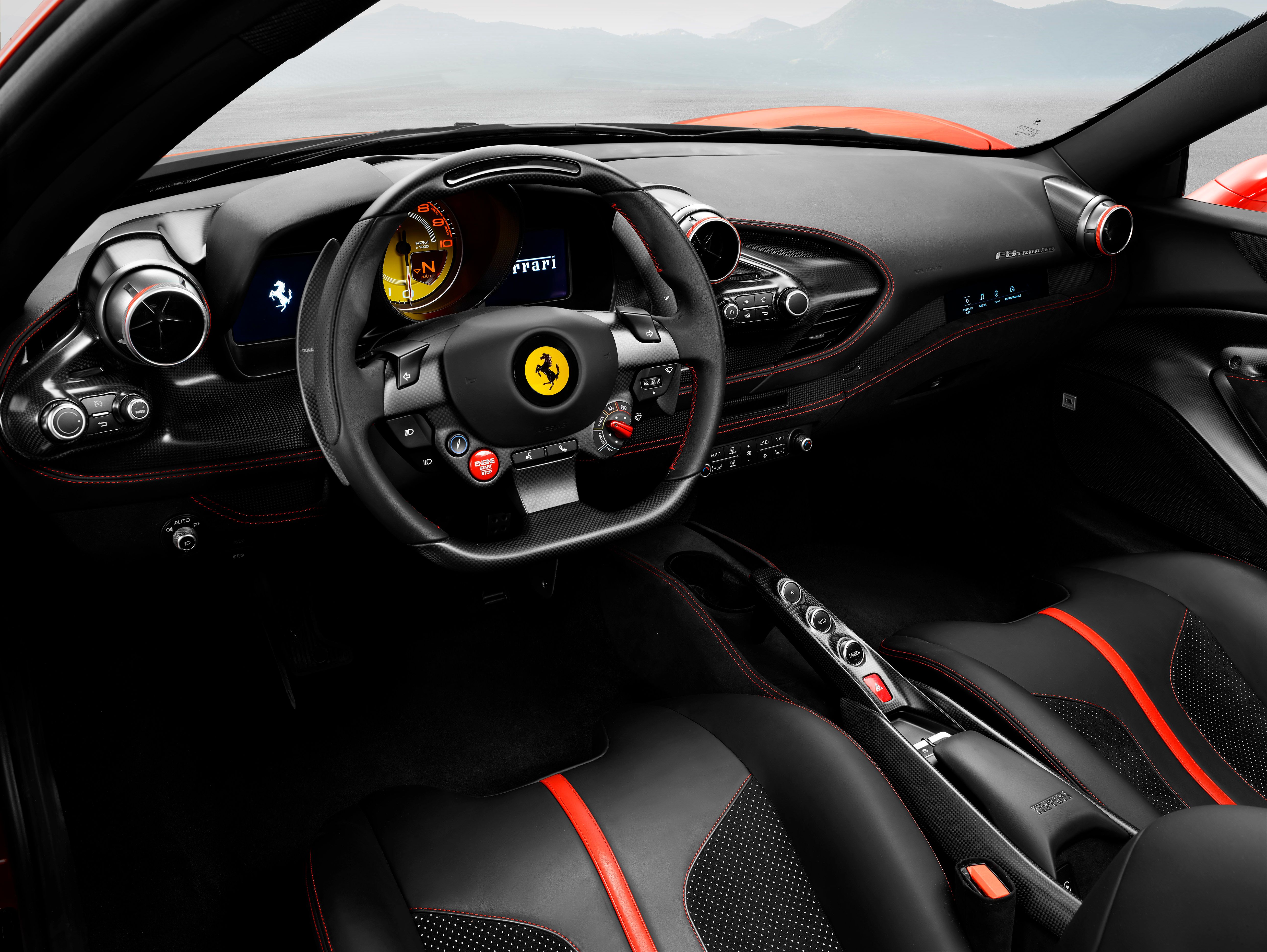This is the new Ferrari F8 Tributo, or, as I suspect some will call it - the Ferrari Fate (you know, F8, Fate, I know, I’m sad). The first appearance of its sexy body will happen at the 2019 Geneva International Motor Show and we all have to be thrilled. It is a new Ferrari. One that replaces the magnificent 488 GTB. It is better in every measurable way than the 488 GTB- it’s lighter, quicker, more powerful, and sticks better to the ground. Plus, it is smarter with all the added driving dynamics trickery. While the Ferrari F8 Tributo seems to be all new, Ferrari actually used an age-old trick to create it. It has the engine we all know, aerodynamic systems already presented on the 488 Pista, and the basic looks heavily inspired by Historical Ferraris. It is a wonderful execution of style, speed, power, and red because of course it is painted in Ferrari red. Hell, this is the new mid-engine Ferrari supercar called the F8 Tributo. This is what you must know about it.
The 2020 Ferrari F8 Tributo Has The Most Powerful V-8 Engine Ferrari Ever Created
Yes, it is the same unit as in the Ferrari 488 Pista. The 3.9-liter, V-8 engine is a glorious piece of engineering that has won three International Engine of the Year Awards straight - in 2016, 2017, and 2018. Plus, it was awarded the title of the best engine of the last two decades.
Let's crunch some Ferrari F8 Tributo numbers here:
-* 720 horsepower at 8,000 rpm
-* 185 horsepower per liter of capacity
-* 568 pound-feet of torque at 3,000 rpm
-* Compression ratio at 9.6:1
Obviously, Ferrari managed to increase the power by 49 horsepower and nine pound-feet of torque over the 488 GTB. Quite a gain.
To achieve this, Maranello engineers had to make some serious improvements that included using materials your parents probably heard about when the U.S. declassified some documents on the SR-71 spy plane.
The Ferrari F8 Tributo has a carbon-fiber intake plenum (for stiffness and lightweight), Inconel exhaust manifold (to resist corrosion at high temperatures), titanium connecting rods (to better resist reciprocating load and basically provide more power at high rpms), and super lightweight titanium aluminide turbo compressors (they will last).
Obviously, all these changes are rooted in the 488 Pista's engine and, as Ferrari installed the same unit in the F8 Tributo, I have to assume that the changes are the same too.
This is not the first time that Ferrari installed the same engine in different cars. Previously, the Ferrari 458 Speciale’s engine ended up in the Ferrari Sergio. That was a limited edition car though.
The 2020 Ferrari F8 Tributo is Still Based On Top of the 458 Italia's Architecture
Ok, the Ferrari 458 Italia is almost ten years old, but its smart aluminum space frame architecture continues to be a staple for the mid-engined likes of V-8 cars at Ferrari.
You, however, shouldn’t be disappointed by this. Ferrari engineers constantly evolve the basic aluminum architecture firstly introduced with the 458 Italia. I remember hearing sometime before that the Ferrari 458 Italia's basic chassis isn’t exactly the same for the car produced in 2010 or in 2013. Engineers constantly evolve the architecture to make it better. That is why I do believe that the F8 Tributo's architecture is considerably more evolved than the one on the 458 Italia despite being crucially linked to it. To prove the point, let me just give you an example:
The 488 Spider's chassis is around 23 percent stiffer compared to the 458 Spider's chassis, despite sharing the same basic layout.
Now, Ferrari is in love with aluminum more so than with carbon fiber (material of choice for the McLaren monocoque design) for several reasons:
-* It’s cheaper
-* It gives Ferrari engineers more possibilities to control it in regard to safety requirements (crumple zones and that jazz)
-* errari can produce aluminum chassis at a far greater rate than it could do with carbon-fiber ones (it is estimated that for every McLaren carbon MonoCell produced,
-* Ferrari can produce 11 aluminum structures of its 488 GTB)
-* It gives engineers more freedom to evolve the design
All of this for a small weight disadvantage. Ferrari can live with it and so can I.
The 2020 Ferrari F8 Tributo has Raw Performance
I mentioned the McLaren 720S a few times in this article for a good reason. The Ferrari 488 GTB could barely match it. Actually, more often than not, the 720S is quicker and faster compared with the 488 GTB. Not anymore!
First off, the 488 Pista paved the way for Prancing Horse brutality, and now, the F8 Tributo walks that path. In simple, understandable terms, the Ferrari F8 Tributo's performance figures are as follows:
- 0 to 62 mph in 2.9 seconds
- 0 to 124 mph in 7.8 seconds
- a top speed of 211 mph
Is it a match now? Well, I don’t think so because the Ferrari can do all of this with a 97-pound weight penalty.
The 2020 Ferrari F8 Tributo Is Considerably Lighter Compared To the Ferrari 488 GTB
Although considerably heavier compared to its closest rival, the F8 Tributo is actually lighter compared to the 488 GTB. And that by 88 pounds. In its lightest form, the dry weight of the Ferrari F8 Tributo stands at 2,932 pounds. That’s staggeringly light considering that the F8 Tributo doesn’t have a lot of carbon fiber pieces on it.
I believe that Ferrari achieved these results in much the same way as it slashed the 488 Pista's weight against the 488 GTB. This would mean that the F8 Tributo has some clear links with the 488 Challenge (that’s an incredible Ferrari racecar). Aside from racecar influences, Ferrari did slash a bit of weight with a thinner steering wheel, differently styled lights, and other numerous design changes that saved a gram or two here and there. Mazda actually did that with the latest MX-5, and it called it gram strategy. Now, Ferrari did not do it exactly like that, but it definitely employed a similar weight reduction strategy. After all, lighter engine components help as much as anything else with slashing excess weight. I could not find out if the F8 Tributo has as light a lithium-ion battery as the 488 Pista. Let’s just say that I wouldn’t be surprised if it does.
The 2020 Ferrari F8 Tributo has Smart Aerodynamics
One of the pivotal characteristics every Ferrari seems to excel at have always been the aerodynamic proves. The F8 Tributo included. I am quite amazed by how the designers manage to accomplish aerodynamic improvements every so often. I mean, the 458 Italia was awesome in the matter, the 488 GTB got better, and now, the F8 Tributo is 10 percent better in the aero game.
“The air from the intake on the front bumper passes through an aerodynamic duct with calibrated sections and exits through a vent on the bonnet, creating a downward force over the front axle,” Ferrari wrote in its press release about the 488 Pista.
The front splitter is one of the most important aero features that considerably enhances the S-duct's performance as it channels more air to it. The F8 Tributo basically has a comprehensive aerodynamic system that can only work right with all pieces in place. And one of those important pieces is all the way in the back - a quite prominent rear spoiler that dramatically improves the downforce. Its design is also influenced by the latest 812 Superfast, so it wraps around the taillights.
Now with that out of the way, I can tell you what those intakes above headlights actually do. They are not fake as on certain new cars with iconic names, but actually, channel the air to the brakes. With better cooling, Ferrari did not have to buff up the brakes. This basically is one of the ways to keep the weight down as much possible.
The 2020 Ferrari F8 Tributo Has a New Design language
A new design language is always a big deal within Ferrari. The F8 Tributo does bring one. Highlights of the new Ferrari design language include:
-* S-Duct integration in the front that is responsible for that big hole in the front metal canopy
-* Slim LED headlights with clear cutouts above them for an impressive brake cooling effect
-* Powerful front splitter that helps channel the air into the S-Duct
-* Substantial rear spoiler so large that it is skilfully integrated into the design, and it visually frames the taillights
-* Distinctive six-fin rear diffuser aggressively tilted upwards for the acceleration of the low-pressure air that exits under the F8 Tributo
-* Twin-light clusters as a throwback to historic Ferraris (specifically the 1975 308 GTB) and a continuation of the lineage that started with the 812 Superfast
-* Versatile engine cover for efficient heat extraction with louvers that display clear designer intent to link the F8 Tributo to the iconic F40
The form follows function, and the function seems to be the main reason for a comprehensive change in style against the 488 GTB. Every single piece on the F8 Tributo is there for a reason. And it looks beautiful as such. This is how you merge the artistic value of Ferrari with the functionality of physics. Kudos to you Ferrari.
The 2020 Ferrari F8 Tributo has Sci-Fi Stuff Called ‘Slide Slip Angle Control” and ‘Ferrari Dynamic Enhancer’
The Slide Slip Angle Control system was pioneered on the 488 Pista as technology never before installed in a production car. It was considerably improved for the F8 Tributo, but the basic operational intent remained the same.
The technology works with a complex algorithm that calculates lateral acceleration, yaw angle, steering wheel angle, and speed in milliseconds and then makes a decision that adjusts the stability control, differential responsiveness, and throttle application. This ultimately becomes a device of savagery. It will make any driver a competent drifter with only a bit of practice.
The Ferrari Dynamic Enhancer additionally helps with the sliding by saving you from a crash.
I find that tech gizmos like this make the Ferrari transition from an analog to a digital world a great success. The SSC and the Dynamic Enhancer will give you the fun of your life, and you will be alive to tell the story after it.
Just How Many 488 Pista Pieces can be Found On The 2020 Ferrari F8 Tributo?
I cannot tell you the exact number of 488 Pista pieces that found their way to the F8 Tributo, but I do know about some:
-* S-duct aerodynamic system with that rearward-facing vent in the center engine
-* Slide Slip Angle Control and Dynamic Enhancer
-* The rearward-angled front radiators
-* The dynamic engine air intakes
-* Most of the software solutions
-* Parts of the dashboard
Bear in mind, this is a comprehensive change on top of the 488 GTB, and between it and the GTB sits that mad 488 Pista. It is bound to have some hardware taken from it. We should be happy about it.
The Ferrari F8 Tributo Versus the McLaren 720S
I’ll just leave this table here:
|
Ferrari F8 Tributo |
McLaren 720S |
|
|
Length (mm) |
4,411 |
4,543 |
|
Width (mm) |
1,979 |
1,930 |
|
Height (mm) |
1,206 |
1,196 |
|
Weight (pounds) |
2,932 |
2,829 |
|
Power (horsepower/pound-feet) |
710/568 |
710/568 |
|
0-62 mph |
2.9 seconds |
2.9 seconds |
|
0-124 mph |
7.8 seconds |
7.9 seconds |
|
Top speed (mph) |
210 |
211 |
The 2020 Ferrari F8 Tributo Is A Hero Car
So, is it a hero?
In my mind it is. Not only is it built of some seriously advanced, modern materials, but it is a sort of an homage to some of the best names from Ferrari's history. It brings a new design language that is beautiful, and it can do superhero things. But I find it to be a hero because of something else - it is not built entirely from carbon-fiber yet it still manages to be in the same society as carbon-fiber built cars. This makes it a hero with clear heritage ties more so than anything else.
Further Reading
Read our full review on the 2020 Ferrari F8 Tributo.
Read our full review on the 2016 Ferrari 488 GTB.
Read our full review on the 2016 Ferrari 488 Spider.
Read our full review on the 2018 Ferrari 488 Pista.
Read our full review on the 2019 Ferrari 488 Pista Spider.







